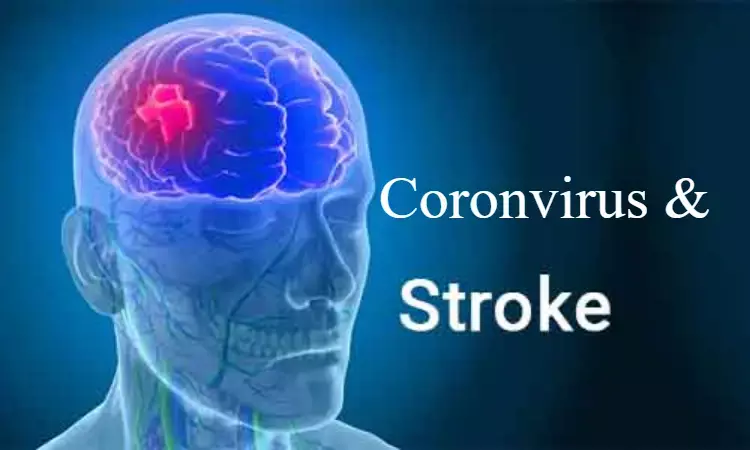- Home
- Medical news & Guidelines
- Anesthesiology
- Cardiology and CTVS
- Critical Care
- Dentistry
- Dermatology
- Diabetes and Endocrinology
- ENT
- Gastroenterology
- Medicine
- Nephrology
- Neurology
- Obstretics-Gynaecology
- Oncology
- Ophthalmology
- Orthopaedics
- Pediatrics-Neonatology
- Psychiatry
- Pulmonology
- Radiology
- Surgery
- Urology
- Laboratory Medicine
- Diet
- Nursing
- Paramedical
- Physiotherapy
- Health news
- Fact Check
- Bone Health Fact Check
- Brain Health Fact Check
- Cancer Related Fact Check
- Child Care Fact Check
- Dental and oral health fact check
- Diabetes and metabolic health fact check
- Diet and Nutrition Fact Check
- Eye and ENT Care Fact Check
- Fitness fact check
- Gut health fact check
- Heart health fact check
- Kidney health fact check
- Medical education fact check
- Men's health fact check
- Respiratory fact check
- Skin and hair care fact check
- Vaccine and Immunization fact check
- Women's health fact check
- AYUSH
- State News
- Andaman and Nicobar Islands
- Andhra Pradesh
- Arunachal Pradesh
- Assam
- Bihar
- Chandigarh
- Chattisgarh
- Dadra and Nagar Haveli
- Daman and Diu
- Delhi
- Goa
- Gujarat
- Haryana
- Himachal Pradesh
- Jammu & Kashmir
- Jharkhand
- Karnataka
- Kerala
- Ladakh
- Lakshadweep
- Madhya Pradesh
- Maharashtra
- Manipur
- Meghalaya
- Mizoram
- Nagaland
- Odisha
- Puducherry
- Punjab
- Rajasthan
- Sikkim
- Tamil Nadu
- Telangana
- Tripura
- Uttar Pradesh
- Uttrakhand
- West Bengal
- Medical Education
- Industry
Guidance to improve pre-hospital triage, routing of suspected stroke patients amid COVID-19

DALLAS, — Leading stroke experts from the American Heart Association's Stroke Council today issued a new framework/guidance, "Pre-hospital Triage of Acute Stroke Patients During the COVID-19 Pandemic," to establish protocols that optimize handling suspected stroke cases before they arrive at a hospital during the ongoing COVID-19 crisis and future pandemics. The article is published in Stroke, a journal of the American Stroke Association, a division of the American Heart Association.
The guidance is focused on ensuring appropriate identification, triage and transportation of suspected stroke patients to the nearest appropriate hospital, and increased collaboration between emergency medical services (EMS) and local hospitals to adapt protocols to meet the needs of their communities.
To achieve these goals, the Council recommends:
- increased interactive videoconferencing (telestroke) networks to assess patients;
- lowering the threshold for transporting stroke patients directly to hospitals capable of providing mechanical clot-removal treatment; and
- considering transporting stroke patients directly to a procedure lab to bypass the emergency room to lessen exposure to infectious disease.
"During the COVID-19 pandemic, it is more important than ever to ensure that stroke patients are taken to the right hospital that can meet their urgent needs at the outset," said Mayank Goyal, M.D., professor of radiology and clinical neurosciences at the University of Calgary in Alberta, Canada. "We urge patients to call 911 at the first sign of stroke symptoms to ensure quick assessment and access to treatment. Remember to act quickly if you or anyone else has stroke symptoms. The most common symptoms can be remembered with the acronym FAST: Face drooping, Arm weakness, Speech difficulty, then it's Time to call 911. Symptoms come on suddenly and every minute counts when a stroke is suspected."
The key messages for health care professionals are:
- Timely and enhanced communication between EMS, hospitals and local coordinating authorities are crucial during a pandemic. The current situation also highlights the need for and importance of ambulance-based and facility-based telestroke networks. Given the differences in COVID-19 prevalence, availability of telestroke networks and critical care resources across regions, local triage and transfer protocols will naturally vary.
- The main factors to guide the triage decision are a) the likelihood of a large vessel occlusion; b) magnitude of additional delays due to inter-hospital transfer/ workflow efficiency at the primary stroke center (PSC)/Acute Stroke Ready Hospital (ASRH); c) need for advanced critical care resources; and d) available bed/staff/personal protective equipment (PPE) resources at the hospitals.
- … It seems reasonable to lower the threshold to bypass hospitals not capable of acute stroke treatment in favor of transporting to a hospital that is stroke-ready, particularly when patients are severely affected and likely to require advanced care. However, transporting all acute ischemic stroke patients to a comprehensive stroke center (CSC) could overwhelm CSCs and lead to clustering of COVID-19 patients in CSCs.
- … necessary transfers of stroke patients who would benefit from endovascular therapy or neurocritical care needs should be ensured, while unnecessary patient transfers of patients should be avoided. Doing so will likely require local hospital boards and health care authorities to collaborate and establish local guidelines and protocols.
The principles presented in the paper are intended as suggestions and to provide a conceptual framework based on the current status of COVID-19. As such, it is preliminary and will be adapted and updated to meet the evolving needs during the COVID-19 crisis and future pandemics.
The paper is authored by the American Heart Association/American Stroke Association Council Science Subcommittees: Emergency Neurovascular Care, the Telestroke and the Neurovascular Intervention Committees.
Co-authors include Johanna M. Ospel, M.D.; Andrew M. Southerland, M.D.; Charles Wira, M.D.; Sepideh Amin-Hanjani, M.D.; Justin F. Fraser, M.D.; and Peter D. Panagos, M.D. Disclosures are detailed in the manuscript.
Additional Resources:
- Infographic: Know the signs of stroke
- Interim guidance issued on stroke care during COVID-19 pandemic
- Stroke and COVID-19
heart.org and stroke.org
Dr Kamal Kant Kohli-MBBS, DTCD- a chest specialist with more than 30 years of practice and a flair for writing clinical articles, Dr Kamal Kant Kohli joined Medical Dialogues as a Chief Editor of Medical News. Besides writing articles, as an editor, he proofreads and verifies all the medical content published on Medical Dialogues including those coming from journals, studies,medical conferences,guidelines etc. Email: drkohli@medicaldialogues.in. Contact no. 011-43720751


